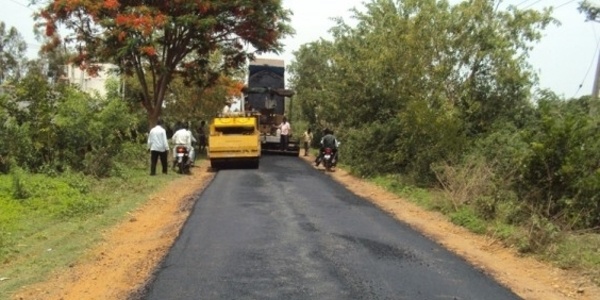India Conquers the Heights: World’s Highest Motorable Road Opens at 19,400 ft
India has broken yet another barrier in high-altitude infrastructure with the completion of the world’s highest motorable road, stretching across Mig La Pass at 19,400 feet (5,913 metres) in eastern Ladakh. This monumental project, part of the Likaru-Mig La-Fukche alignment, connects the Hanle region with Fukche village, situated near the Line of Actual Control (LAC). The new road surpasses the previous record holder, Umling La, which stands at 19,024 feet. Notably, Mig La Pass is even higher than the South Base Camp of Mount Everest in Nepal (17,598 feet) and the North Base Camp in Tibet (16,900 feet), underscoring the extraordinary scale of this achievement.Engineering Brilliance Amid Extreme ConditionsConstructing a road at such altitudes is no ordinary task. Engineers faced a harsh environment where temperatures fall well below freezing, oxygen levels drop to nearly half of those at sea level, and the terrain is riddled with loose soil, rocky patches, and icy winds. Snowstorms and unpredictable weather added further complications, challenging both human endurance and machinery. The project was executed under Project Himank, the Border Roads Organisation’s (BRO) flagship initiative for high-altitude road construction, under the leadership of Brigadier Vishal Srivastava. The team overcame technical hurdles such as steep gradients, soil instability, and permafrost, demonstrating cutting-edge engineering and strategic planning. Upon completion, the Indian national flag and BRO flag were hoisted at Mig La Pass, marking the culmination of a feat that blends national pride with human perseverance.Boosting Connectivity for Remote CommunitiesBeyond its record-setting stature, the road holds immense significance for residents in Hanle and Fukche. These communities often face long periods of isolation during harsh winters, with essential supplies such as food, medicine, and fuel delayed by snow-blocked routes. With the Mig La Pass road, travel times will be shortened significantly, and year-round access to critical services becomes feasible. Locals will find it easier to reach schools, hospitals, and marketplaces, while the road will also support emergency services and disaster relief efforts in this strategically sensitive border region.A Win Over Human LimitsThe Mig La road is not just an infrastructure project; it is a story of human endurance against extreme odds. Engineers worked at altitudes where every step is exhausting, machinery operates at reduced efficiency due to low oxygen, and sudden weather shifts threaten progress. “The team worked tirelessly through snow, high winds, and sub-zero temperatures. It tested our physical and mental limits, but every obstacle was overcome with determination and planning,” said Col. Rajeev Khanna, a BRO engineer involved in the project. Such projects highlight the strategic importance of Ladakh, where roads are crucial not only for civilian life but also for border security. The Likaru-Mig La-Fukche route will improve mobility for patrols, vehicles, and supplies near the LAC, reinforcing India’s readiness in the region.Enhancing Tourism and Strategic SignificanceWhile the primary goal of the road is connectivity and strategic infrastructure, the route also has the potential to boost tourism in Ladakh. Adventurers and travelers seeking extreme landscapes will find the Mig La road a thrilling journey, offering unparalleled views of snow-draped mountains, rugged valleys, and remote settlements. The road also symbolizes India’s engineering prowess at extreme altitudes, drawing attention from international observers and inspiring a new generation of engineers and explorers to take on high-altitude challenges. For the BRO team, the road represents a personal and collective triumph. A Record That InspiresThe Mig La Pass road demonstrates what vision, perseverance, and teamwork can achieve, even in the most unforgiving environments. It is a symbol of human resilience, technological advancement, and national pride, bridging remote communities and strategic frontiers alike. As India celebrates this engineering marvel, the road stands as a reminder that boundaries, whether geographic or human, can always be pushed. At 19,400 feet, the Mig La Pass is more than a road; it is proof of courage, skill, and the spirit of reaching new heights.







